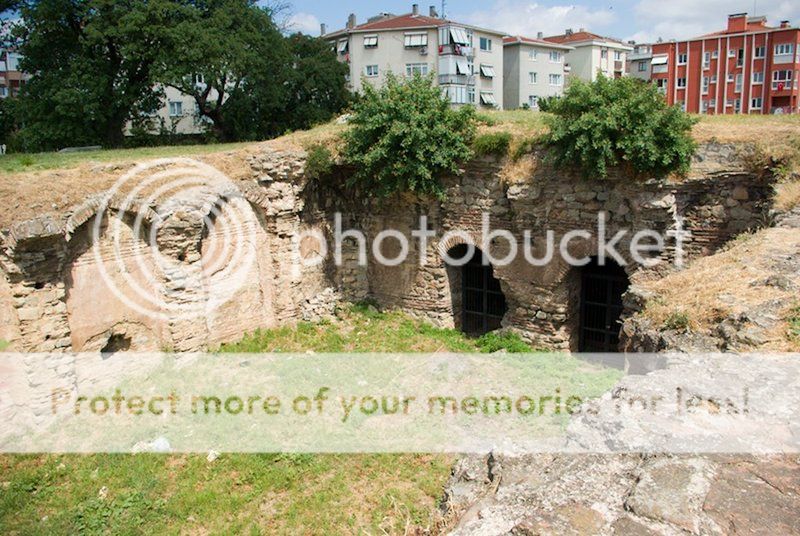GPS : 40°56'36.0"N 29°06'56.3"E / 40.943333, 29.115639

PHOTOGRAPHS ALBUM
It is claimed that the ruins of the 9th century Satyros Monastery or Bryas Place is located in the Küçükyalı Çınar district on land next to the mosque and the office of the village headman. Ioannes Grammatikos, who was sent as Byzantine envoy to Abbasid Caliph Memnun, recounted how impressed he was by the palace of the caliph to the Emperor Theophilus after his return home in 832. It is believed that the Architect Patrikios started construction of the palace in the year 832.
Architectural materials from the Satyr Temple, which was near to the palace, were used in its construction. The fate of the palace is unknown after the period of Emperor Theophilus. There is a very large cistern to the west of the ruins.
The Küçükyalı Arkeopark, a large archaeological area on the Asian side of Istanbul, hosts the only surviving Byzantine monastic complex in the city. The 9th-century complex contains gorgeous marble floors, valuable mosaics and beautiful art objects that she hopes to see in a museum someday
The remains in question represent the patriarchal monastic complex of Satyros. It is the only surviving 9th century-structure in the city and was built by Patriarch Ignatios between 866 and 877. His body was buried at the site next to a large sized church dedicated to St. Michael, a prominent figure in Byzantine history who is depicted in the mosaics inside Hagia Sophia.
The large triple-apsed church with cross-in-square plan and the large (2700 cubic metres) cistern must have belonged to the Monastery of Satyros (AD 867-877) and not the Palace of Bryas (first half of the 9th century) as had been thought.
The church was refurbished in the 12th century, with the addition of a “reliquary chapel” and opus sectile flooring in the apse of the church. Georadar and geoelectrical prospection, combined with topographical study of remains, indicates that the church and cistern were the nucleus of a much more extensive complex.
The vaulted monastery, cistern and water channels are considered rare examples of their time. The constructions when they were built could be seen from the Prince’s Islands. The French author Pargoire wrote a study on monasteries on the Marmara seashore that identified the ruins in the area as part of the Satyros Monastery, an identification later supported by Ernst Mamboury, a geometry teacher at Galatasaray High School.
In addition to identifying the site as Byzantine, the excavations have retrieved organic residue from the period that are being used to examine patterns of climate change and other aspects of the history of Istanbul. There is nothing from the Ottoman period here, not even a piece of pottery. Found beautifully decorated marble floors, golden mosaics, wonderful coins and beautiful art objects that deserve to be displayed in a museum.
Although the ancient monastery had been used in Ottoman times as a stable for sheep and possibly elephants, its identity remained obscure until excavations and research in the last 15 years identified it as the Monastery of Satyros built by Patriarch Ignatios born the son of a Byzantine emperor.
Ignatios was castrated and exiled to the Princes Islands when rivals deposed his father. Later he became patriarch and built several monasteries on the islands and elsewhere in Constantinople. His grave is believed to lie in the Monastery of Satyros, awaiting continued excavations on the site. Visitors curious about his character can see his portrait at the Hagia Sophia in the upper galleries of the building.
LOCATION SATELLITE MAP
These scripts and photographs are registered under © Copyright 2017, respected writers and photographers from the internet. All Rights Reserved.
No comments:
Post a Comment